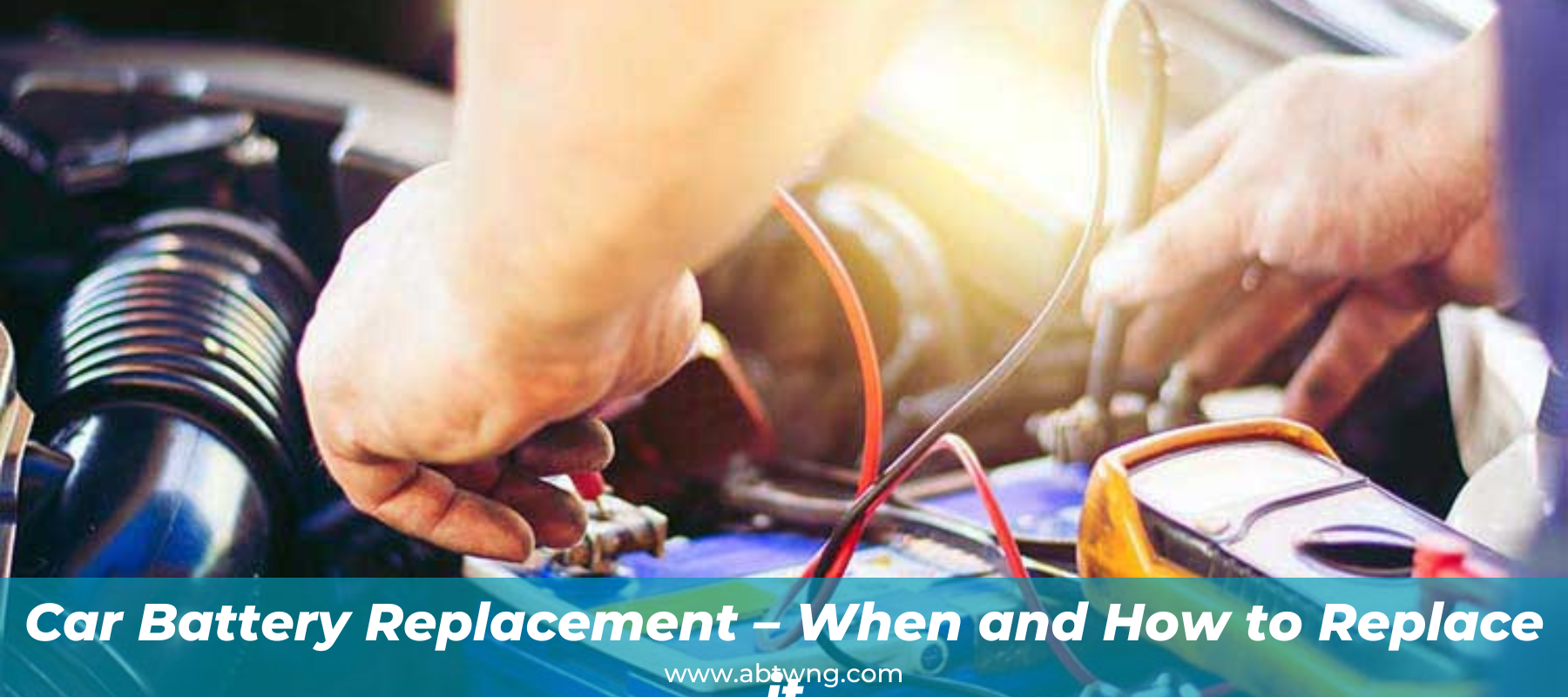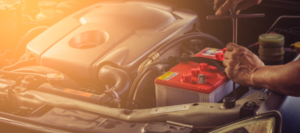
Your car’s battery is a critical component that provides the necessary power to start your vehicle and keep it running smoothly. However, like all other components in your car, the battery will eventually wear out and need to be replaced. Knowing when and how to replace your car battery is important to avoid getting stranded on the side of the road. In this blog, we will discuss the signs that indicate it’s time for a car battery replacement and how to replace it properly. Whether you’re a new driver or an experienced one, understanding these tips can save you time and money in the long run.
So if you’re wondering when to replace your car battery and how to do it safely and efficiently, keep reading. We will cover everything you need to know about car battery replacement, including how to choose the right battery for your vehicle and the steps to follow for a successful car battery replacement.
Symptoms of a Bad Car Battery
The car battery is an essential component of your vehicle’s electrical system, providing power to start the engine and run accessories like the lights, radio, and air conditioning. Like all car parts, the battery can wear out over time and may need to be replaced. Here are some symptoms of a bad car battery that you should be aware of:
1. Slow engine crank
If you notice that your engine is cranking slower than usual when you turn the key, it could be a sign that your battery is weak. The battery may not be providing enough power to turn over the engine, which can cause it to crank slowly or not at all.
2. Dim headlights and interior lights
If your headlights or interior lights are noticeably dimmer than usual, it could be a sign of a failing battery. The battery provides power to these accessories, and a weak or dying battery may not be able to keep them running at full brightness.
3. Electrical issues
A failing battery can cause a range of electrical issues, including problems with the power windows, door locks, and radio. If you notice that these accessories are not working correctly, it may be a sign that your battery is failing.
4. Check engine light
The check engine light can be triggered by a range of issues, including a failing battery. If the battery is weak or not providing enough power, it can cause the check engine light to come on.
5. Swollen car battery replacement case
If you notice that the car battery case is swollen or bloated, it could be a sign of a failing battery. This can happen when the battery overheats or is overcharged, causing the internal components to expand.
If you notice any of these symptoms, it’s important to have your battery checked by a professional. A trained technician can perform a battery test to determine if the battery needs to be replaced. If your battery does need to be replaced, it’s important to choose a high-quality car battery replacement that is compatible with your vehicle’s electrical system.
At times, car battery replacement may become necessary. Car battery replacement is a relatively simple process, but it’s important to have it done by a professional to ensure that it’s installed correctly. A professional can also dispose of the old battery safely and properly.
Possible Causes for Dead Car Batteries
Car batteries are essential components of any vehicle, providing power to start the engine, run electronics, and keep the lights on. However, they can also be a common source of frustration for drivers when they die unexpectedly. If you’ve ever found yourself stranded with a dead battery, you know how inconvenient and costly it can be to deal with car battery replacement or jump-starting.
- Age: The average lifespan of a car battery is around 3-5 years, depending on the make and model. As batteries age, they lose their ability to hold a charge and eventually die. If your battery is approaching its lifespan or has exceeded it, it’s a good idea to get it checked and consider replacing it before it dies completely.
- Extreme Temperatures: Temperature extremes can also affect battery life. High temperatures can cause the electrolyte to evaporate, while cold temperatures can slow down the chemical reactions necessary for the battery to work. If you live in an area with extreme temperatures, it’s important to take extra care of your battery, such as keeping it insulated during the winter or parked in the shade during the summer.
- Leaving Lights or Electronics On: Leaving lights or electronics on in the car is a common cause of dead batteries. This can happen accidentally, such as leaving the headlights on overnight, or intentionally, such as listening to music with the engine off for an extended period. It’s important to make sure all electronics are turned off when you leave the car to avoid draining the battery.
- Faulty Charging System: A car’s charging system is responsible for recharging the battery while the engine is running. If the charging system is faulty or not working correctly, it can cause the battery to die, even if it’s relatively new. A professional mechanic can diagnose and fix any issues with the charging system.
- Parasitic Drain: Parasitic drain is when electronics or systems in the car continue to draw power from the battery even when the car is turned off. This can include things like a malfunctioning alarm system or a faulty radio. If you suspect parasitic drain, it’s important to get it checked and fixed to prevent further battery drain.
- Corroded or Loose Connections: Corroded or loose battery connections can also cause issues with the battery, as they prevent the battery from charging or connecting to the car’s electrical system properly. Regular maintenance, such as cleaning the battery terminals and checking for loose connections, can help prevent these issues.
Here’s What You Need to Know in Car Battery Replacement
A car battery replacement is an essential component of your vehicle, providing the necessary electrical energy to start your engine and power your accessories. However, like any other part of your car, your battery will eventually need to be replaced. If you’re looking to replace your car battery, here’s what you need to know:
1. Ensure your engine is not running
Before you start replacing your car battery, make sure your engine is not running. This is a crucial safety precaution that will prevent any electrical shocks or accidents.
2. Detach Negative Cable
The first step in replacing your car battery is to detach the negative cable. This cable is usually black and marked with a minus sign (-). Use a wrench or pliers to loosen the nut that holds the cable in place, and then gently pull the cable off the battery terminal.
3. Detach Positive Cable
Once you’ve detached the negative cable, it’s time to detach the positive cable. This cable is usually red and marked with a plus sign (+). Use a wrench or pliers to loosen the nut that holds the cable in place, and then gently pull the cable off the battery terminal.
4. Remove Battery Clamp
After you’ve detached both cables, you’ll need to remove the battery clamp that holds the battery in place. Depending on your car’s make and model, the clamp may be secured with screws, bolts, or a latch. Use the appropriate tools to remove the clamp and set it aside.
5. Remove Old Battery
Once the clamp is removed, you can now remove the old battery. Lift it carefully out of the battery tray and set it aside.
6. Cleaning and Clear the Corrosion
Before installing the new battery, it’s a good idea to clean and clear any corrosion from the battery tray and cable terminals. Corrosion can prevent a good electrical connection and lead to battery failure. Use a wire brush or battery terminal cleaner to remove any buildup.
7. New Battery Installation
Now it’s time to install the new battery or do car battery replacement. Carefully place it in the battery tray, making sure it’s secure and level. If necessary, use a battery spacer to ensure a snug fit.
8. Attach Positive Cable
Once the battery is in place, it’s time to reattach the cables. Start with the positive cable, using a wrench or pliers to tighten the nut that holds it in place. Make sure the cable is snug and secure.
9. Attach Negative Cable
After attaching the positive cable, it’s time to attach the negative cable. Use a wrench or pliers to tighten the nut that holds it in place. Make sure the cable is snug and secure.
10. Check the Connections
Now that both cables are attached, it’s time to check the connections. Make sure the cables are not loose and that there are no signs of corrosion. If you notice any issues, tighten the nuts or clean the terminals as necessary.
11. Dispose of the Old Battery Safely
Finally, it’s important to dispose of the old battery safely. Car batteries contain lead and other toxic chemicals that can harm the environment if not disposed of properly. Many auto parts stores and recycling centers will accept old batteries for recycling. Be sure to follow any specific disposal instructions provided by your local waste management authority.
Car Battery Replacement Service
In conclusion, a car battery is a crucial component of your vehicle’s electrical system, and it’s essential to know when and how to replace it. If you notice any signs of a failing battery, such as slow engine cranking or dim headlights, it’s best to get it checked and replaced if necessary.
You can replace a car battery yourself, but it’s recommended to have it done by a professional mechanic or a reliable towing service such as Alpha Brothers Towing – Car Battery Replacement Service. They can help you choose the right battery for your vehicle, and ensure that it’s installed correctly and safely.
Remember that a car battery replacement is not just a matter of convenience, but also a matter of safety. A faulty battery can lead to a host of electrical problems, which can cause accidents or breakdowns on the road.
So, if you’re experiencing any issues with your car battery, don’t hesitate to get it checked and replaced as soon as possible. And if you’re ever in need of a reliable car battery replacement service, Alpha Brothers Towing is just a phone call away.





